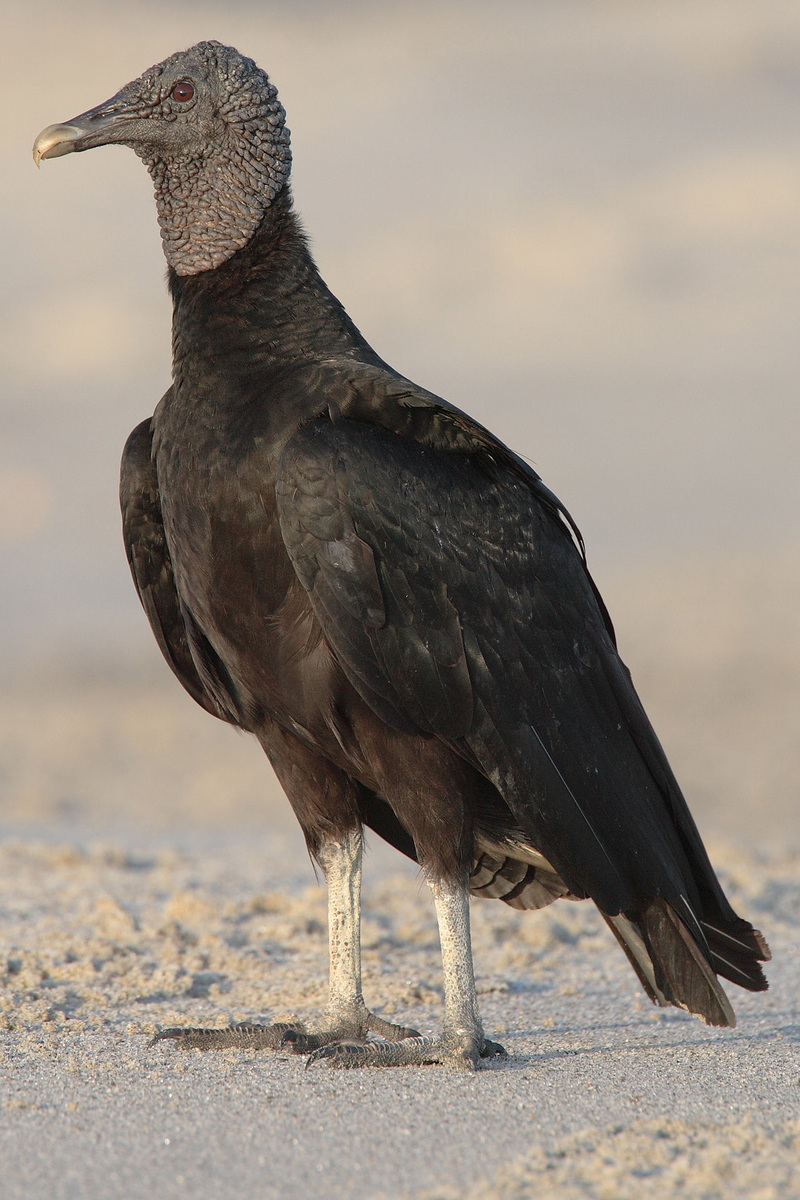American Black Vulture (Coragyps atratus) - Wiki American Black Vulture
From Wikipedia, the free encyclopedia
[Photo] American Black Vulture, Farallon, Panama, 2005 December; This individual was one of a large group of vultures (and circling frigatebirds) waiting for fish offal from local fishermen. Photograph: Mdf http://en.wikipedia.org/wiki/User:Mdf
A common New World vulture, the American Black Vulture, or Black Vulture, Coragyps atratus, tends to have a more southerly distribution than its compatriot, the Turkey Vulture, which breeds well into Canada.
Despite the similar name and appearance, this species is unrelated to Eurasian Black Vulture. The latter species is an Old World vulture in the family Accipitridae (which includes eagles, hawks, kites and harriers), whereas the American species is a New World vulture in the family Cathartidae. It is the only extant member of the genus Coragyps.
These are very large birds of prey at 65cm length and with a 1.5m wingspan. Their plumage is mainly glossy black; they have broad wings with white tips, a short tail and a featherless greyish head. In comparison with the Turkey Vulture, the Black Vulture flaps its wings more frequently during flight.
These birds are found in open regions in the southeastern United States, Mexico, Central America and South America. They are usually permanent residents.
They eat mainly carrion, but also eggs and decomposing plant material. They may scavenge at garbage dumps and sometimes kill young animals. These birds on occasion forage in groups. They soar high when searching for food, holding their wings flat when gliding.
The female lays 2 or 3 eggs on the ground in a wooded area or in a hollow log or other cavity. Both parents incubate and feed the young, regurgitating food at the nest site.
Though not having any natural predators, they have become scarce in some areas due to lack of suitable nesting habitat. They are known to regurgitate when approached or disturbed, which in birds, besides being a sign of nervousness, assists in predator deterrence and taking flight (by decreasing takeoff weight).
In Canada, Mexico and the United States, this species receives special legal protections as covered under the Migratory Bird Treaty Act of 1918.
Fossil history, Oregon USA and specifics
From the Early to the Late Pleistocene a prehistoric species of Black Vulture, Coragyps occidentalis, occurred all over the present species' range. This bird did not differ much from the Black Vulture of today except by its size, which was about 10-15% larger, its relatively flatter and wider bill (Fischer 1944), filled the same ecological niche as the living form (Hertel, 1995), and indeed seems to have evolved into it by becoming smaller during the last ice age (Howard, 1962). Well documented from fossil bones, the genus Coragyps gives a rare glimpse in the evolutionary dynamics of two chronospecies. The final stages of this evolutionary transformation must have been witnessed by humans: a subfossil bone of the extinct species was found in an Paleo Indian to Early Archaic (9000-8000 years BCE) midden at Five Mile Rapids near The Dalles, Oregon (Miller, 1957).
http://en.wikipedia.org/wiki/American_Black_Vulture
| The text in this page is based on the copyrighted Wikipedia article shown in above URL. It is used under the GNU Free Documentation License. You may redistribute it, verbatim or modified, providing that you comply with the terms of the GFDL. |
